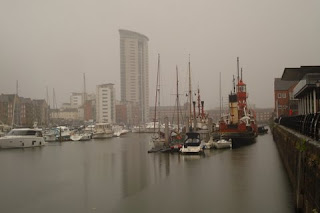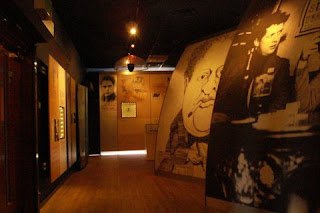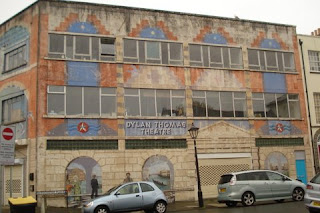
Kensington Palace and the Golden Gate
Everyone enjoys a bit of gossip, especially when it concerns famous people. I was surprised to learn, on my recent visit to Kensington Palace in London, that there is no end of gossip associated with the British royal family. And I don't mean recent 'gossip' as reported in newspapers and magazine after such tragic events as the untimely death of Princess Diana or the antics of Prince Harry and Sarah Ferguson. The gossip heard at Kensington goes way back to the first royal inhabitants.
The palace gardens
Kensington Palace has been a royal resident since the late 1600's when it was purchased by King William II and Queen Mary II after they assumed the throne as joint monarchs in 1689. Before that it was known as Nottingham House, originally a Jacobean mansion built in 1605.
There's a lot of tragedy in the stories of Kensington Palace too. Sadly, Queen Mary II died of smallpox in the palace in 1694 and just a few years later, King William III suffered a fall from a horse and died shortly after. Then the palace became the residence of Queen Anne whose life was fraught with health issue and unhappy relationships. By the age of 30 she was lame and corpulent. She had 18 children but only two survived past the age of three and many were stillborn. One room in the palace shows all the little chairs representing "Queen Anne's Hopes"
In 1710, in the Queen's State Apartments (also known as the Queen's Closet), Queen Anne and her best friend Sarah, Duchess of Marlborough had a huge argument. The Duchess was jealous of the attention the queen had shown to another woman and actually accused them of having a lesbian relationship. After that gossip circulated the Duchess was stripped of her official duties and the two women never spoke to each other again.
There is a "Whispering Room" in the palace where you can actually 'hear' the whispered gossip of all the royal goings-on. Lean your ear close to the horns of the Victrola and you'll hear it: "Psssss pssss...did you hear...?" Quite amusing!
Queen Victoria was born in the palace in 1819 and lived there much of her life. At the entrance is a beautiful statue of her on a pedestal.
And you can visit several of the rooms she occupied from the nursery to the Privy Council room where she signed her official documents upon become Queenon June 20, 1837.
You will see the piano that her beloved consort Prince Albert used to play music he had composed for her. There is also a display of her clothing, including the formal mourning clothes she and her children wore after dear "Bertie" died.
Death and tragedy are as much part of the palace as the titillating gossip. We all remember that sad day on August 31, 1997 when "the People's Princess", Princess Diana was killed in a car crash in Paris. Within hours of the news the golden gates at the south side of the palace were covered in floral tributes and in the following days ever bit of railing around the palace was covered with flowers.
As you enter the Vestibule of the palace there is a beautiful photo of Diana and embroidered pillows of her as well as William and Kate who will reside there once the new renovations are completed.
(The palace is divided into two parts - the historic state apartments which you can tour, and the private living quarters of the royal family.) There is a Diana Memorial Playground in memory of the late Princess located next to the palace.
I really enjoyed the brief visit I made this summer. I didn't have as much time as is needed to see everything because I had a plane to catch. But I'd definitely recommend this as an interesting destination if you happen to be visiting London.
Check out details for opening times etc at www.hrp.org.uk










































